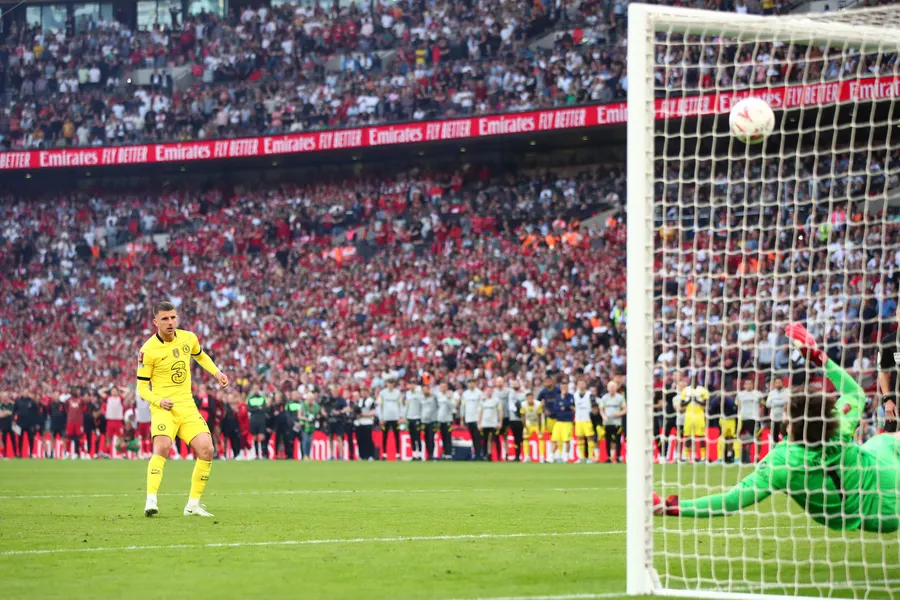Penalty shootouts are the ultimate test of nerves in football. It’s a moment where the fate of an entire match, and sometimes a tournament, rests on a player’s ability to maintain composure and execute a seemingly simple kick. Yet, beneath the surface lies a mental battle of immense complexity.
This blog delves into the psychology of penalty shootouts, exploring what goes through a player’s mind, the pressure they face, and the strategies they use to handle the moment.
1. The Weight of Expectations
When a player steps up for a penalty, they carry the hopes and dreams of their team, fans, and sometimes an entire nation. This weight can feel crushing.
Internal Pressure: There is a great deal of self-imposed pressure to win since they fear being remembered more for failure than for success.
External Pressure: The fans, teammates, and media add to the pressure, creating a high-stakes environment where every move is scrutinized.
Example: England’s penalty shootout losses in past international tournaments haunted players for years, showing how failure can stick in public memory.
2. The Fight-or-Flight Response
In a penalty shootout, the brain of a player is activated to produce the fight-or-flight response, which releases adrenaline. Although this can improve the physical performance of a player, it usually hampers fine motor skills—the precision required in penalties.
Heart Rate Increase: Players may feel rushed due to increased heart rates.
Tunnel Vision: Stress can narrow the focus, which sometimes proves harmful to decision-making.
Self-Doubt: Players may overthink their approach, doubting their ability to execute the perfect shot.
3. The Mental Preparation
Top players use psychological training to prepare for penalties:
Visualization: Players imagine scoring the penalty, rehearsing the moment in their mind to reduce anxiety.
Routine: A consistent pre-kick routine helps players to keep their feet on the ground.
Focus on Process, Not Outcome: By focusing on their technique rather than the result, players can shut out distractions.
Example: Cristiano Ronaldo is known for his meticulous pre-kick routine, which helps him maintain composure under pressure.
4. Psychological War between the Keeper
Penalty shootouts are as much a psychological battle between the kicker and the keeper as they are a test of technical ability.
Body Language: A keeper can point to a corner, delay the kick, or argue verbally to break the concentration of the kicker.
Alignment: Being slightly off-center can unconsciously influence a kicker’s choice.
The Stare-Down: A staring contest can be a way to intimidate, making the taker question their decision.
Example: Emiliano Martínez’s antics in Argentina’s 2021 Copa América shootout showcased how goalkeepers can spook penalty takers.

5. Role of Confidence
Confidence is the key element in penalty shootouts. The more a player is confident that he will score, the better he will perform.
Past Success: A player with an excellent past performance is likely to be more confident when taking penalties.
Body Language: Confident players are composed, and their body language can also affect the mindset of the goalkeeper.
Example: When Zinedine Zidane took that famous Panenka penalty in the 2006 World Cup final, it was a class display of confidence when it mattered.
6. Overthinking: The Enemy of Success
Overthinking can be an enemy of the best players even in high-pressure situations.
Choice Paralysis: The players are unable to decide between power or placement and second-guess themselves at the last minute.
Muscle Memory vs. Conscious Thought: Overanalysis can interfere with the flow of muscle memory, leading to errors.
Example: Gareth Southgate’s miss in the Euro 1996 semi-final highlighted how overthinking can lead to disastrous outcomes.
7. Role of Team Dynamics
A penalty shootout is not just an individual test but a collective experience that can impact the morale of the team.
Order Selection: Coaches often choose penalty takers based on their skills, confidence, and mental strength.
Support System: Teammates play a crucial role in encouraging and comforting players before and after their kicks.
Shared Responsibility: Knowing that the shootout outcome does not rest solely on one person can alleviate pressure.
Example: Team unity during Italy’s Euro 2020 shootout win against England is proof of the value of collective might.
8. Science of Victory
Penalty takers now have statistical research revealing patterns of improvement in shooting accuracy:
Accuracy Trumps Force: The corner targets are harder to stop for a goalkeeper, independent of speed.
Composure: The ones who take their choice of target earlier and stick with it have more success than the ones who flinch.
Body Angle: Goalkeepers can sometimes predict a penalty’s direction based on the taker’s approach angle.
Example: Jorginho’s trademark hop-and-skip penalty relies on observing the goalkeeper’s movement before choosing his target.
9. Coping with Failure
Missing a penalty in a shootout can be devastating, but it doesn’t define a player’s career.
Reframing the Narrative: Coaches and teammates can help players see a missed penalty as part of the game, not a personal failing.
Learning Opportunity: Most players take missed penalties as a chance to develop their psychological and technical competencies.
Support from Fans: Public support often becomes a way to help the players overcome the emotional blow.
Example: After missing penalties during Euro 2020 final, Marcus Rashford, Jadon Sancho, and Bukayo Saka faced widespread online abuse, but received significant support from the fans and even their peers.
10. Penalties and Drama
For fans, penalty shootouts are heart-stopping moments of drama. Every kick represents a blend of skill, strategy, and psychology, turning players into heroes or villains in seconds.
Although penalties can be cruel, they also provide some of football’s most iconic moments, showcasing the sport’s raw emotion and unpredictability.
Conclusion
It’s in the microcosm of the penalty shoot-out, when both physical ability and mental toughness must coincide, where these players triumph less for technical aptitude than for mental robustness, preparedness, and control.
For a fan, that little insight into penalties will allow the game’s greatest nerve-racking moments to take on greater significance. After all, it is in the head that the match is not just played but also won or lost.






